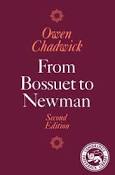Several articles have appeared recently about the discovery and identification of remains in Jamestown, Va., in The Atlantic, Smithsonian Magazine, The New York Times and The Washington Post. The Atlantic headline on July 28 summed up the issue: “A Skeleton, a Catholic Relic and a Mystery About American Origins.” In the article by Adrienne Lafrance, the researchers at Jamestown and others discuss the ramifications of one of the discoveries in the grave of Capt. Gabriel Archer, a leader of the English colony. His grave and those of three others were found in the sanctuary of the Anglican chapel.
A small silver box found in his grave is “a historical bombshell” because the archaeologists believe it is a reliquary, which leads them to believe that Archer, who had many conflicts with Capt. John Smith of Pocahontas fame, might have been a secret Catholic in Anglican Jamestown.
A reliquary is a receptacle containing a piece of bone or some other object associated with a saint. Relics have always been important to Catholics: Every church altar contains a reliquary, and the priest kisses the altar, usually on top of the reliquary, at the beginning and end of each Mass.
The presence of a Catholic reliquary buried in an Anglican church has provoked quite a few questions. Was Archer secretly a Catholic and just seeming to conform to the Church of England, with King James I as its supreme governor and defender of the faith? Since Jamestown “was fundamentally anti-Catholic” and was “meant to be the beachhead for an English empire in America that will serve as a bulwark against Catholicism,” The Atlantic article states, his crypto-Catholicism brings questions about his leadership in the colony.
Please read the rest there.

















